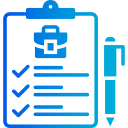Tailor for Levels and Specializations
Lead with projects, internships, hackathons, and coursework. Spotlight transferable skills, concise context, and measurable outcomes. Ask the community below for targeted feedback on one project you plan to polish this week.
Tailor for Levels and Specializations
Emphasize scale, performance, reliability, and technical leadership. Quantify business outcomes, highlight mentoring, and include systems design wins. Mention incident response improvements and architectural decisions with clear trade-offs.
Tailor for Levels and Specializations
For security, highlight risk reduction and compliance frameworks. For data, showcase pipeline reliability, model performance, and governance. For cloud, quantify cost optimization and resilience. Invite peers to critique your metrics in the comments.
Tailor for Levels and Specializations
Lorem ipsum dolor sit amet, consectetur adipiscing elit. Ut elit tellus, luctus nec ullamcorper mattis, pulvinar dapibus leo.








